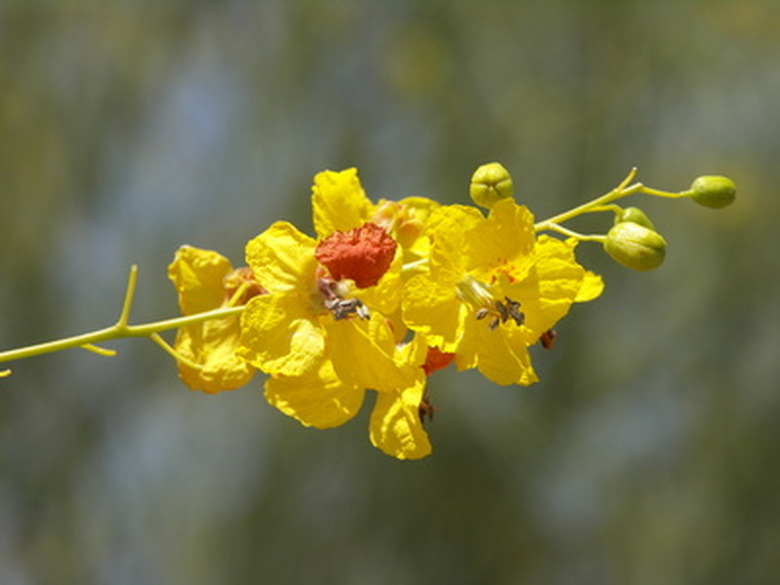Drought Tolerant Ornamental Trees
Trees are an integral part of the water-wise landscape, providing cooling shade and favorable micro-climates. Many drought-tolerant trees are also ornamental, featuring lovely flowers, fall foliage or sculptural trunks and branches. Selecting the right tree for your water-wise landscape means finding species with requirements that match your climatic conditions and water budget.
Extremely Drought Tolerant
Extremely drought-tolerant trees may need supplemental water during the first two seasons and can be harmed by too much water.
The desert willow (Chilopsis linearis) is a small, deciduous tree native to the southwestern United States and northern Mexico. It grows 25 feet high and produces clusters of trumpet-shaped blossoms in white, pink or purple. Desert willow is hardy in USDA zones 7b to 11, and thrives in full sun to partial shade. It grows in most any well-drained soil.
- Trees are an integral part of the water-wise landscape, providing cooling shade and favorable micro-climates.
- Many drought-tolerant trees are also ornamental, featuring lovely flowers, fall foliage or sculptural trunks and branches.
The Anacacho orchid tree (Bauhinia lunarioides) is a small, semi-deciduous tree, native to the Chihuahuan Desert. It grows to 8 feet high in USDA zones 8b to 11. It produces orchid-like blossoms in spring that range from deep pink to white. This tree will grow in any well-drained soil in full sun to partial shade.
The blue palo verde (Cercidium floridum) is native to the Sonoran Desert. This semi-deciduous tree has a vase-like sculptural form, and grows to 30 feet tall. The blue palo verde has smooth, greenish bark, blue-green foliage and bright yellow flowers in spring. Blue palo verde will thrive in well-drained soils in full sun in USDA zones 8 to 10.
- The Anacacho orchid tree (Bauhinia lunarioides) is a small, semi-deciduous tree, native to the Chihuahuan Desert.
- This tree will grow in any well-drained soil in full sun to partial shade.
Drought Tolerant
After they are established, drought-tolerant species may only need water during extended droughts.
New Mexico locust (Robinia neomexicana) is a deciduous tree native to New Mexico and Texas. It grows 20 feet high and produces showy clusters of fragrant pink flowers in spring. This tree is cold hardy and tolerates a wide range of soils. It thrives in USDA zones 5 to 9.
Gambel oak (Quercus gambelii) grows 12 feet high, usually in clusters. This oak, native to canyons and washes of the desert Southwest, thrives in rocky or sandy soils in full to partial sun. The gambel oak has beautifully twisted trunks and branches, and deep green foliage, which turns orange in the fall. It lives in USDA zones 4 to 8
- After they are established, drought-tolerant species may only need water during extended droughts.
- This oak, native to canyons and washes of the desert Southwest, thrives in rocky or sandy soils in full to partial sun.
Moderately Drought Tolerant
Moderately drought-tolerant trees will need some supplemental water during the growing season.
The goldenrain tree (Koelreuteria paniculata) is a compact tree that grows 30 feet high. This tree produces cascading clusters of bright yellow flowers in mid-summer and is hardy in USDA zones 5 to 9. Goldenrain tree prefers rich, well-drained soil.
Western redbud (Cercis occidentalis) is a deciduous tree native to the western United States. It has dark gray to black bark, bright green foliage and brilliant deep pink flowers that emerge in early spring. This tree prefers rich, well-drained soil and moderate moisture. It thrives in USDA zones 4b to 9a.
- Moderately drought-tolerant trees will need some supplemental water during the growing season.
- This tree prefers rich, well-drained soil and moderate moisture.
